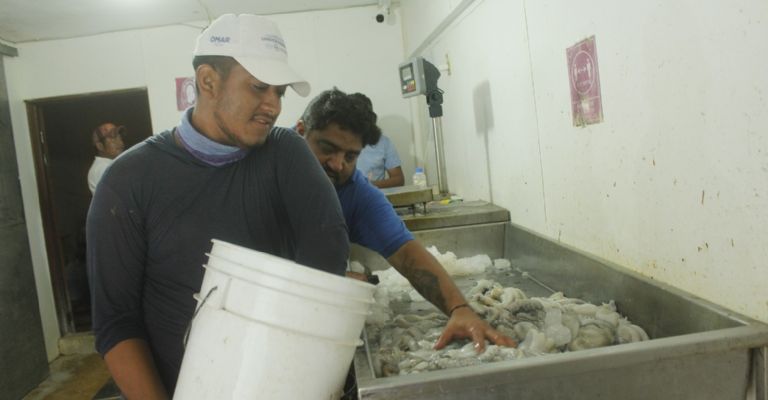Mussels, clams, oysters, octopus, fish of various species, and sea turtles are contaminated with microplastics, according to academics from the Center for Research and Advanced Studies (CINVESTAV).
UNAM researchers from the State of Campeche discovered microplastics in the stomachs of fish from the eastern coast. Environmental biologist José Cruz Hoil Rajón revealed that personnel are being trained to carry out more in-depth studies on this problem on the Yucatecan coasts.
Dalila Aldana Aranda, from the Mérida Unit of CINVESTAV, revealed that different marine species are contaminated with microplastics, so in the not too distant future eating seafood will also begin to affect humans.
In the Caribbean, studies are carried out with the pink snail, which serves as an indicator of what is happening in this region to measure the amount of microplastics in the waters.

The researcher of the Department of Marine Resources explained that the research is done directly on the coasts with direct methods that do not compromise the life of the species, analyzing the feces of the gastropod mollusks and through them, the quantity of polymers is measured.
She reported that microplastics are incorporated into the marine flora and fauna and then into the trophic chains, as they are consumed by the smallest species, on which large fish feed, and then by other larger ones, they end up being captured by humans, and on household tables. According to research, when a fish consumes the microscopic waste, within two hours the chemical components pass into its bloodstream and within several days they adhere to its body.
Humans are ingesting this material when they eat mussels, clams, oysters, octopus, and fish, which exposes the body to chemical additives of toxic substances such as dyes that are highly harmful to the body.
The most toxic plastics are those containing insecticides or herbicides that contain organochlorine compounds, extremely dangerous agents for all living beings.
With the research, it is possible to know the amount of microplastics ingested by a fish. It is also possible to know if this material comes from bags, bottles, string, or nets. Plastics do not degrade, they become smaller and smaller until they become a particle; they disappear from the planet and are incorporated into the trophic chain in water sources such as lakes, rivers, sea, and even on land.
This substance is composed of particles of 100 microns to five millimeters and two primary types are identified: microparticles in the form of spheres, used in cosmetology industries, for cleansing creams, exfoliants, and toothpaste; and it is also present in the automotive industry, as it is used for abrasives linked to sanding and epoxy paints.
Secondary polymers are plastic derivatives used in packaging, toys and utensils, which, when degraded, turn into microparticles.
To avoid continuing to contaminate our planet, the professional suggested that the amount of waste generated from polymers should be reduced, as well as strictly regulating the industries that use the substance for productive purposes.
The researcher estimates that in a few more years there will be more plastics than fish in the oceans unless humans take action to prevent them from reaching the seabed.
TYT Newsroom


